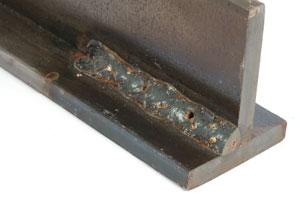Recognizing Porosity in Welding: Checking Out Causes, Impacts, and Prevention Strategies
Porosity in welding is a relentless difficulty that can significantly impact the top quality and stability of welds. As professionals in the welding sector are cognizant, comprehending the reasons, effects, and prevention methods associated with porosity is critical for achieving robust and dependable welds. By delving into the root triggers of porosity, analyzing its destructive effects on weld top quality, and exploring effective avoidance strategies, welders can improve their expertise and skills to produce high-grade welds regularly. The detailed interaction of elements adding to porosity requires a thorough understanding and an aggressive strategy to guarantee successful welding outcomes.
Common Reasons of Porosity
Porosity in welding is mainly triggered by a combination of variables such as contamination, incorrect protecting, and insufficient gas coverage during the welding process. Contamination, in the kind of dirt, oil, or rust on the welding surface, develops gas pockets when heated up, resulting in porosity in the weld. Inappropriate shielding occurs when the protecting gas, typically utilized in procedures like MIG and TIG welding, is unable to fully shield the liquified weld pool from responding with the surrounding air, causing gas entrapment and subsequent porosity. Additionally, inadequate gas insurance coverage, usually because of incorrect circulation rates or nozzle positioning, can leave parts of the weld unsafe, enabling porosity to form. These aspects collectively add to the formation of gaps within the weld, deteriorating its integrity and possibly triggering architectural problems. Recognizing and addressing these typical causes are vital steps in preventing porosity and making certain the quality and strength of bonded joints.
Results on Weld Quality
The presence of porosity in a weld can significantly jeopardize the general top quality and honesty of the welded joint. Porosity within a weld creates voids or tooth cavities that compromise the structure, making it extra prone to breaking, corrosion, and mechanical failing. These voids function as anxiety concentrators, reducing the load-bearing capability of the weld and boosting the likelihood of premature failure under used stress. Furthermore, porosity can also work as prospective sites for hydrogen entrapment, further exacerbating the degradation of the weld's mechanical residential or commercial properties.
Additionally, porosity can hinder the effectiveness of non-destructive screening (NDT) techniques, making it testing to find other issues or discontinuities within the weld. This can lead to substantial safety issues, specifically in vital applications where the structural honesty of the welded components is click this extremely important.

Avoidance Techniques Review
Provided the harmful effect of porosity on weld top quality, efficient avoidance techniques are vital to preserving the architectural stability of welded joints. In addition, choosing the proper welding parameters, such as voltage, existing, and take a trip speed, can help minimize the danger of porosity development. By incorporating these avoidance techniques into welding techniques, the occurrence of porosity can be substantially lowered, leading to more powerful and a lot more dependable welded joints.
Importance of Appropriate Shielding
Correct securing in welding plays a vital duty in protecting against climatic contamination and making sure the stability of bonded joints. Protecting gases, such as argon, helium, or a combination of both, are typically made use of to safeguard the weld pool from responding with aspects airborne like oxygen and nitrogen. When these reactive elements enter into call with the hot weld pool, they can trigger porosity, bring about weak welds with lowered mechanical properties.

Poor shielding can cause different defects like porosity, spatter, and oxidation, compromising the structural honesty of the welded joint. Therefore, adhering to correct securing techniques is vital to produce top notch welds with minimal flaws and make certain the longevity and dependability of the bonded elements (What is Porosity).
Monitoring and Control Approaches
Just how can welders properly check and control the welding process to guarantee optimum results and prevent issues like porosity? One secret technique is through making use of sophisticated surveillance innovations. These can consist of real-time surveillance systems that give feedback on specifications such as voltage, present, take a trip speed, and gas flow rates. By continuously monitoring these variables, welders can more info here identify deviations from the perfect problems and make prompt changes to stop porosity development.

Additionally, implementing appropriate training programs for welders is essential for monitoring and controlling the welding process successfully. What is Porosity. Enlightening welders on the value of keeping consistent parameters, such as appropriate gas securing and take a trip rate, can aid avoid porosity concerns. Normal analyses and qualifications can also guarantee that welders are efficient in tracking and managing welding procedures
In addition, using automated welding systems can boost surveillance and control capabilities. These systems can specifically control welding criteria, reducing the possibility of human mistake and ensuring consistent weld high quality. By integrating sophisticated surveillance technologies, training programs, and automated systems, welders can successfully keep an eye on and control the welding procedure to lessen porosity flaws and achieve high-grade welds.
Conclusion
